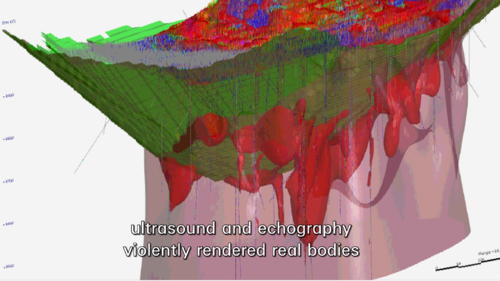Difference between revisions of "Volumetric Regimes"
m (→Chapter index) |
|||
| Line 19: | Line 19: | ||
=== [[Introduction]] === | === [[Introduction]] === | ||
| − | |||
=== [[somatopologies|somatopologies: On the ongoing rendering of corpo-realities]] === | === [[somatopologies|somatopologies: On the ongoing rendering of corpo-realities]] === | ||
| − | |||
=== [[clandestine_disorder|Signs of clandestine disorder: The continuous after-math of 3D computationalism]] === | === [[clandestine_disorder|Signs of clandestine disorder: The continuous after-math of 3D computationalism]] === | ||
| − | |||
=== [[x,_y,_z|x, y, z: Dimensional axes of power]] === | === [[x,_y,_z|x, y, z: Dimensional axes of power]] === | ||
| − | |||
=== [[parametric_unknowns|Parametric Unknowns: Hypercomputation between the probable and the possible]] === | === [[parametric_unknowns|Parametric Unknowns: Hypercomputation between the probable and the possible]] === | ||
| − | |||
=== [[depths_and_densities|Depths and Densities: Accidented and dissonant spacetimes]] === | === [[depths_and_densities|Depths and Densities: Accidented and dissonant spacetimes]] === | ||
| − | |||
=== [[Colophon]] === | === [[Colophon]] === | ||
Revision as of 16:02, 27 March 2020
Volumetric Regimes: material cultures of quantified presence
This wiki is an ongoing workspace for a book in the making. Volumetric Regimes will be published by Open Humanities Press (2021) in the DATA browser series, edited by Geoff Cox and Joasia Krysa.
Volumetric Regimes: material cultures of quantified presence
Edited by Possible Bodies (Jara Rocha and Femke Snelting)
Volumetric Regimes emerges from Possible Bodies, a collaborative project on the intersection between artistic and academic research. The project was initiated in 2016 to explore the very concrete and at the same time complex and fictional entities of so-called "bodies" in the context of 3D computation. Possible Bodies developed alongside an inventory of cases and resulted in texts, workshops, visual essays and performances. This book would bring together diverse materials from an ongoing conversation between artists, software developers and theorists working with the techniques and technologies of detecting, tracking, printing, modelling and rendering.
The book will be organised in five chapters, each containing differently formatted materials. Each chapter starts with a commissioned contribution which addresses the material-discursive entanglements that emerge from the crossing of quite differentiated worldlings. Contributors include: Ramon Amaro, Maria Dada, Helen Pritchard, Nicolas Malevé.
